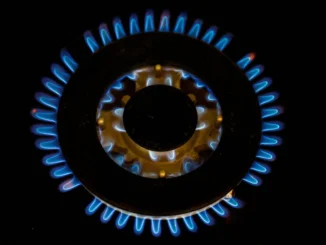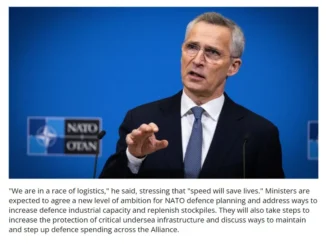
Russian pipeline gas exports to Europe continued their recent uptrend in the first half of August, with average daily flows hitting their highest levels since August of 2022, Energy Intelligence calculates based on gas transmission data.
Combined flows via the only two gas pipeline routes available from Russia to Europe (excluding Turkey) rose 6% versus the first half of July to 1.36 billion cubic meters, or 90.4 million cubic meters per day, in the first half of August.
Exports picked up in July and August, mainly because Gazprom’s hub-linked prices declined, which made offtakes under the company’s take-or-pay contracts more attractive than in previous months when buyers took more spot LNG.
Gazprom’s prices are understood to have fallen further in August, while spot prices increased somewhat on expectations of strikes in Australia that could significantly tighten global LNG supplies.
War Hits Export Volumes
Despite the uptick in volumes in July and August, Russia’s pipeline gas exports to Europe (excluding Turkey) remain significantly lower than before the war — even though the EU has not banned or restricted such imports (unlike oil imports).
In the first half of 2023, they totaled just 12.1 Bcm or an average of 67 MMcm/d, down 86% from 462 MMcm/d in the first half of 2021 — the year before energy markets were disrupted by Russia’s invasion of Ukraine in February 2022.
Since then Russian gas gradually stopped flowing to more than 15 countries, including Gazprom’s biggest prewar market Germany, which imported nothing in the first half of this year versus 28.9 Bcm (160 MMcm/d) in the first half of 2021.
Russian pipeline gas continues to flow via Ukraine to Slovakia, Austria and Italy, as well as to non-EU Moldova. Gazprom’s contract with Slovenia expired at the end of last year and there have been no reports of an extension.
Via the Turk Stream pipeline, Russian gas continues to flow to Greece, North Macedonia, Serbia, Bosnia and Herzegovina, Hungary and Croatia.
Bulgaria and Romania stopped importing pipeline gas from Russia themselves, although they are understood to still be receiving some Russian gas under swap deals with neighboring countries.
Combined flows to Slovakia, Austria and Italy were 6 Bcm (33.2 MMcm/d) in the first half of 2023, according to data from Ukraine’s gas transmission system operator.
Two years ago, Italy imported some 63 MMcm/d, Austria 30 MMcm/d and Slovakia 14 MMcm/d, according to Gazprom data.
Ukraine transits Russian gas to Moldova via a separate pipeline, where Gazprom limited the flows to just 5.7 MMcm/d in October of last year, down from around 9.4 MMcm/d that it supplied in the first half of 2021.
Combined exports to countries supplied by Turk Stream amounted to just over 5 Bcm (28.7 MMcm/d) in the first half of 2023.
Turk Stream supplied some 31 MMcm/d in the first half of 2021, but the recipients of the gas it carries and the volumes they receive have changed since then.
Bulgaria received some 8.1 MMcm/d from Turk Stream in the first half of 2021 but ended its imports from Russia last year.
Hungary, now one of the main Turk Stream offtakers, was only connected to the pipeline in October 2021. Before that it received Russian gas via Ukraine.
Energy Intelligence estimates that Hungary might have received up to 10 MMcm/d via Turk Stream in the first half of this year, down from some 22 MMcm/d via Ukraine in the first half of 2021.
Another key Turk Stream customer, Greece, slashed its imports to just 4 MMcm/d in the first half of 2023 from 9 MMcm/d in the same period of 2021, as it started to buy more LNG and Caspian gas.
LNG Stays Strong
Meanwhile, Russia’s exports of LNG to Europe have held up well despite the war and the accompanying deterioration in political relations. The volumes are now roughly equal to Russia’s reduced pipeline gas exports to the region.
Europe imported record volumes of LNG from Russia last year and it has remained the top destination for Russia’s LNG exports.
In the first half of 2023, Russian LNG exports to Europe (excluding Turkey), totaled 8.6 million tons (11.9 Bcm), down less than 1% from the same period of 2022 but up 7% versus the first half of 2021.
Turkey became a regular importer of Russian LNG in late 2022, taking cargoes from Gazprom’s newly launched Portovaya LNG facility, and importing a total of 520,000 tons in the first half of 2023.
Spain, which lies well beyond the reach of Russian pipeline gas, remains one of the key importers of Russian LNG.
In the first half of 2023, Russian LNG exports to Spain — from Novatek’s Yamal plant in the Arctic region — jumped 70% versus the same period of 2022 to almost 3 million tons, according to Kpler.
Source: Energy Intelligence –
ENB Top News
ENB
Energy Dashboard
ENB Podcast
ENB Substack



